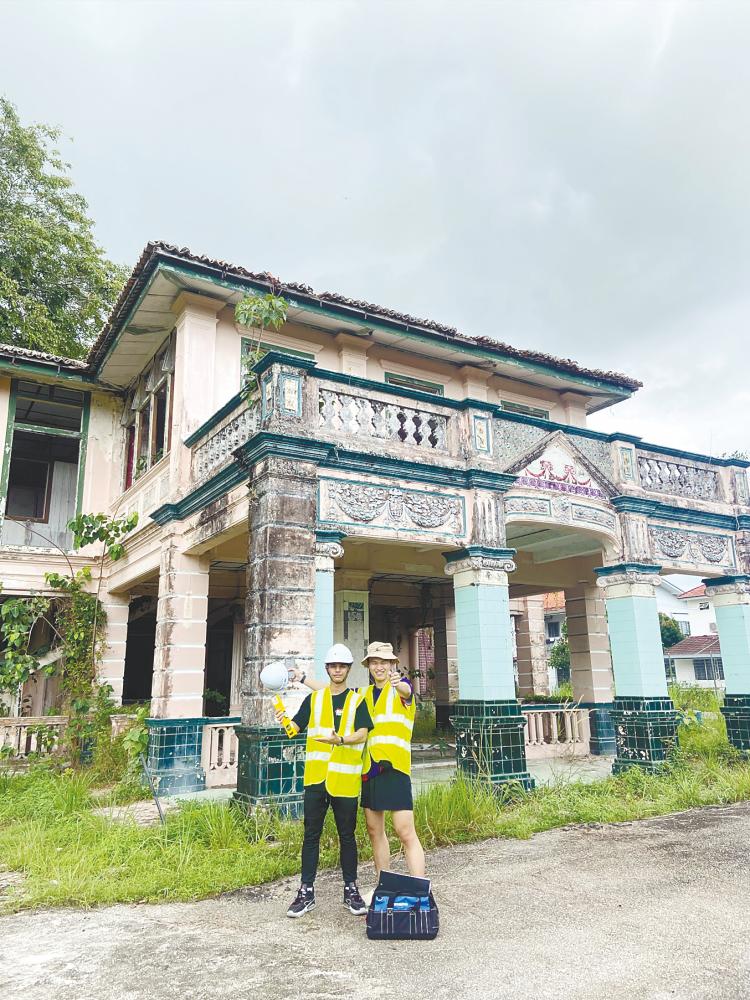I REMEMBER reading Oliver Twist when I was young and imagining how hard life must be in those times. I believe other readers feel the same way, too, because author Charles Dickens skillfully captured the essence of the harsh realities of Victorian London.
Hence, I could not help but associate this time-travelling moment when I had the chance to visit an old and abandoned mansion in Malacca recently – the Nam Hoe Villa in Klebang.
The actual house where Dickens lived from 1837 to 1839 has now become the Charles Dickens Museum. The museum is situated at 48 Doughty Street in London, England. This Georgian townhouse was the residence of Dickens during an important period of his life and career.
It was in this house that Dickens wrote some of his most famous works, including Oliver Twist and Nicholas Nickleby. Today, the museum preserves this historic building and provides visitors with an opportunity to explore the author’s former home and learn more about his life and literary legacy.
I believe we should do the same for Nam Hoe Villa. As a building surveying student who had the opportunity to explore this mansion recently with my friends for our coursework, I was moved by the history and architectural significance of this house.
During our visit, we were able to witness the convergence of Peranakan, British and Rome architectural styles, each telling a story of its own. The fact that this building has served as a guest house for dignitaries, a venue for significant political gatherings and a temporary residence for VIPs adds layers of historical depth and importance.
The said VIPs include historically important figures such as Tun Tan Siew Sin, Tun Dr Ismail, Datuk Cheah Toon Lock and Tun Leong Yew Koh. I was also told that important meetings were held there, including pre-independence meetings chaired by our first prime minister, Tunku Abdul Rahman.
The layout of Nam Hoe Villa stands out compared with other mansions, with interesting features such as the positioning of the staircase, the open spaces within the house and the surrounding sub-houses.
It is a living testament to a bygone era, and the opportunity to explore its hidden backgrounds, history and mysteries was an honour. This building is not just a structure, it is a repository of cultural and historical value.
Also, the conflict between the owners and local authorities, leaving this building abandoned, is disheartening. It is a stark reminder of the challenges we face in conserving our historical landmarks.
However, this only fuels our determination to raise awareness and advocate for the preservation of such significant sites. Nam Hoe Villa represents a link to our past, and its potential registration under the National Heritage would be an important step in ensuring its conservation.
This experience has solidified my belief in the importance of conserving old buildings such as Nam Hoe Villa. They are not just relics of the past, they are living testaments to our history, culture and identity.
As we concluded our exploration, I felt an immense sense of responsibility to promote the historical significance of Nam Hoe Villa and advocate for its conservation. It is not just about preserving old buildings, it is about honouring the stories they hold and the lessons they can teach us.
Perhaps, one day everyone can visit the Nam Hoe Villa Museum, complete with stories from its glorious past. Our collective past can help us chart our way towards a harmonious future.
The writer is a final year building surveying student at the
Faculty of Built Environment, Universiti Malaya. Comments: letters@thesundailycom









